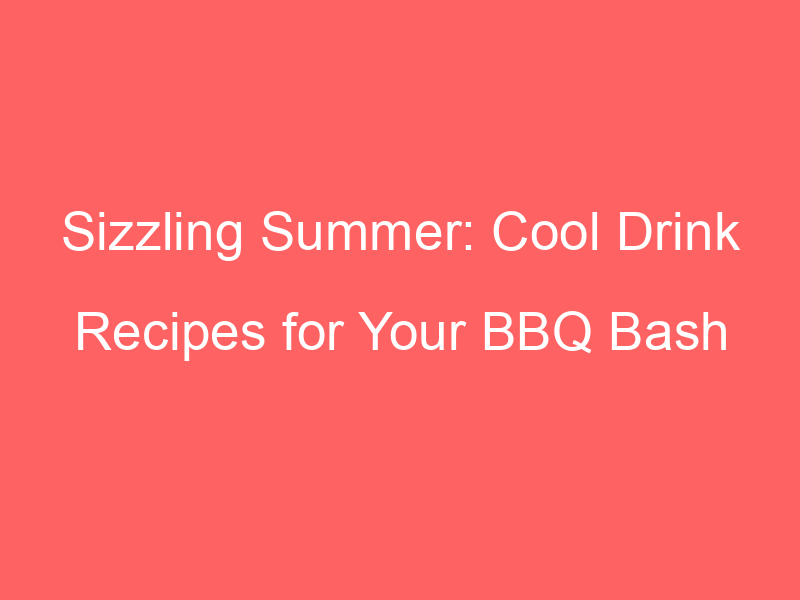Introduction to Outdoor Grilling
Outdoor grilling is an exciting and rewarding activity that brings together the joy of cooking, the thrill of the outdoors, and the satisfaction of creating delicious meals. Whether you’re a seasoned chef or a cooking novice, grilling offers a unique culinary experience that’s both fun and fulfilling.
- The Joy of Outdoor Cooking
- Why Grilling is a Must-Try for Beginners
There’s something truly special about outdoor cooking. The fresh air, the open sky, and the sizzle of food on the grill all combine to create a unique and enjoyable experience. Cooking outdoors allows you to connect with nature while creating delicious meals. It’s a chance to escape the confines of the kitchen and enjoy the great outdoors. Plus, the food you cook on a grill often has a distinct, smoky flavor that’s hard to replicate with other cooking methods.
If you’re new to cooking, grilling is a great place to start. It’s simpler than you might think, and it’s a fantastic way to learn about different types of food and how they cook. Grilling also offers immediate feedback, so you can see (and taste) the results of your efforts right away. Plus, with a little practice, you’ll be able to create mouth-watering meals that will impress your friends and family. So why not give it a try? You might just discover a new passion for cooking!
In the following sections, we’ll dive deeper into the world of grilling, exploring everything from the basics for beginners to advanced techniques for seasoned grillers. So whether you’re just starting out or looking to hone your skills, there’s something for everyone in the exciting world of outdoor grilling.
A Beginner’s Guide to Grilling: Understanding the Basics
Welcome to the exciting world of grilling! Whether you’re planning a backyard barbecue or just want to cook up some delicious meals for your family, understanding the basics of grilling is essential. Let’s dive in and learn about getting started, choosing the right grill, understanding grill safety, and the essential grilling tools for beginners.
Grilling for Beginners: Getting Started
Starting your grilling journey can be both exciting and a bit daunting. But don’t worry, we’ve got you covered. Here are some key steps to help you get started:
- Choosing the right grill
- Understanding grill safety
- Essential grilling tools for beginners
There are several types of grills available in the market, including charcoal, gas, and electric grills. Each type has its own advantages and disadvantages. For instance, charcoal grills are known for their smoky flavor but require more cleanup, while gas grills offer convenience and control but may not provide the same flavor. Consider your budget, flavor preferences, and convenience when choosing a grill. For more information, check out this Wikipedia article on barbecue grills.
Grilling can be a lot of fun, but it’s important to keep safety in mind. Always keep your grill on a flat surface away from any flammable materials. Never leave your grill unattended when it’s on, and make sure to clean it regularly to prevent grease buildup, which can cause fires. For more grill safety tips, refer to this Wikipedia section on grill safety.
Having the right tools can make your grilling experience much easier. Some essential grilling tools for beginners include a good set of tongs, a grill brush for cleaning, a meat thermometer to ensure your food is cooked to the right temperature, and a grill cover to protect your grill when it’s not in use. For a more detailed list of grilling tools, check out this Wikipedia page on barbecue tools.
Remember, practice makes perfect. The more you grill, the better you’ll get at it. So, don’t be afraid to experiment and try new things. Happy grilling!
Outdoor Grilling Tips: Preparing Your Grill
Before you can start grilling, it’s crucial to prepare your grill properly. This involves two main steps: cleaning and preheating. Let’s delve into each of these steps in detail.
- How to Properly Clean Your Grill
- Ensure the grill is cool and disconnected from its fuel source.
- Remove the grates and soak them in warm soapy water.
- While the grates are soaking, use a grill brush to scrub the inside of the grill.
- Rinse the grates and dry them thoroughly before replacing them.
- Wipe down the outside of the grill with a damp cloth.
- Preheating: Why It’s Important
- Ensures even cooking: A properly preheated grill ensures your food cooks evenly. This prevents some parts of your food from being overcooked while others are undercooked.
- Improves flavor: Preheating helps to sear the food quickly, locking in juices and flavor.
- Prevents sticking: A hot grill surface prevents food from sticking, making it easier to flip and remove your food.
Keeping your grill clean is not just about aesthetics; it’s also about safety and flavor. A clean grill prevents flare-ups, ensures even heat distribution, and keeps your food from sticking. Here’s a simple step-by-step guide:
Remember, a clean grill is a happy grill!
Preheating your grill is a step that should never be skipped. It’s as important as preheating your oven when baking. Here’s why:
To preheat your grill, simply turn it on high for 10-15 minutes before you start cooking. This will burn off any remaining residue and bring your grill to the ideal cooking temperature.
By properly cleaning and preheating your grill, you’re setting yourself up for a successful grilling experience. Happy grilling!
Mastering Basic Grilling Techniques
Grilling is an art that requires practice and understanding of basic techniques. Whether you’re a beginner or an experienced griller, mastering these techniques can take your grilling game to the next level. Let’s dive into some basic grilling techniques that every griller should know.
BBQ Techniques for Beginners: Direct and Indirect Grilling
- What is direct grilling?
Direct grilling involves placing the food directly over the heat source. This method is perfect for grilling small, thin, and quick-cooking foods like burgers, steaks, and hot dogs. It allows for a quick sear and can give your food a delicious charred flavor.
- What is indirect grilling?
Indirect grilling is when the food is placed away from the heat source. This method is ideal for larger or tougher cuts of meat that need to be cooked slowly to become tender. It’s like slow-cooking in your grill!
- When to use each method
Use direct grilling for quick-cooking foods and indirect grilling for slow-cooking foods. Remember, the key is to match the cooking method to the type of food you’re grilling.
- Understanding the importance of temperature control
Temperature control is crucial in grilling. Too hot, and your food may burn on the outside before it’s cooked on the inside. Too cool, and your food may dry out before it’s fully cooked. Understanding how to control the temperature of your grill can make a big difference in the outcome of your grilling.
- How to adjust the heat on your grill
Adjusting the heat on your grill depends on the type of grill you have. For a gas grill, you can simply adjust the knobs. For a charcoal grill, you’ll need to spread out the coals for lower heat or stack them for higher heat.
- How to grill the perfect steak
For a perfect steak, preheat your grill to high. Season your steak with salt and pepper, then place it on the grill. Cook for about 4-5 minutes on each side for medium-rare. Let it rest for a few minutes before serving.
- Tips for grilling chicken
When grilling chicken, use indirect heat for larger pieces to ensure they cook through without burning. Smaller pieces can be cooked over direct heat. Always use a meat thermometer to ensure your chicken is cooked to the safe internal temperature of 165°F.
- Grilling seafood: A basic guide
Seafood grills quickly and can easily overcook. Use a medium-high heat and oil your grill grates to prevent sticking. Cook until the fish is opaque and flakes easily with a fork.
- Best vegetables for grilling
Some of the best vegetables for grilling include peppers, zucchini, onions, asparagus, and eggplant. Cut them into large, flat pieces so they don’t fall through the grill grates.
- How to grill fruits
Fruits like peaches, pineapples, and apples can be delicious when grilled. Cut them into large pieces, brush with a little oil, and grill over medium heat until they’re caramelized and soft.
- Recap of grilling techniques for beginners
Remember, direct grilling is for quick-cooking foods and indirect grilling is for slow-cooking foods. Control your grill’s temperature, match the cooking method to the food, and don’t forget to let your meat rest before serving.
- Encouragement for continued practice and exploration
Grilling is a skill that improves with practice. Don’t be discouraged if your first few attempts aren’t perfect. Keep trying, experimenting, and learning. Happy grilling!






